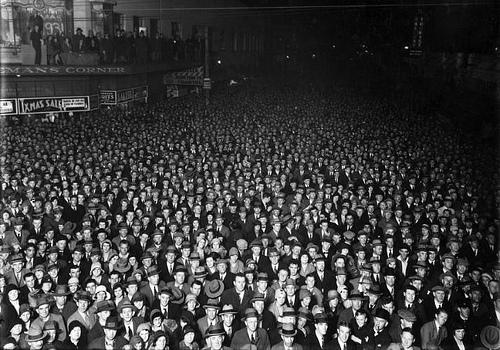
Yesterday Seth Godin rocked the boat with another post that many people disagree with: No More Big Events.
This short post said that big events don’t work because they aren’t as good as “frequent cheap communication”. Scott McKain wrote a long response on why he disagreed which is worth a read.
I don’t disagree with Seth. Why, in an age of such connectedness, do we still try to fill rooms?
At least, that’s what our friend Robin asked in December. And it’s a good question.
Here’s an idea: don’t run a big event that stands alone. Instead, create touch points. I like to make events the last touch point in a journey of discussion, debate and getting to know people. And of course, that event serves as the first touch point for people to connect deeper, begin collaborating, and putting together the next series of touches.
That enables People-to-People. Big events breed crowds with little connection (which is why Robert Scoble is wrong.)
Do You Want More Big Events?
- Can small touch points create the buzz that a big event does? In my mind, that’s why we need both. Yes?
Archived Comments
-
http://treypennington.com treypennington
Seth is often dead on the money. When he’s not, he at least stimulate smart minds to tackle the error. Either way, Seth’s contribution will probably be remembered/revered as much as Drucker’s.
Now to Like Minds…
Is it a big event? Yes.
Is it in a big conference hall? Well, yes…
How many people? Well, if you mean IN the conference hall, then maybe 350 people; but, it depends…
[here comes the really tricky question. ready?]
When is Like Minds?Aha! You can RSVP for several Like Minds events (tweetups, lunches, conference, immersive). But wait; there’s more.
You can also become a part of Like Minds right this very moment. Quick, log into your Twitter client, add a column for the search #LikeMinds, starting reading the results, add your own thoughts and include #LikeMinds in your post. You’re in.
How many people make up Like Minds? Again, it depends. Sometimes it might be just you and that one other person who’s giving of himself/herself to help you solve your problem. Other times it might be 20 posting comments on one blog post for three days (8 in favor, 8 against, 2 trying to sort it all out, 2 egging the other 18 on; 20 ending up feeling a special connection and a bond of distinction with friends in a world filled with mostly strangers).
So, you can have your big events, your one-of exhausting (for you) extravaganzas. Or, you can do what Scott Gould, Drew Ellis and an incredible group of sponsors and friends have done, and create a movement that gets together in a dizzying array of physical and digital venues as each person has need.
(and next week, this one person has a “need” to be there will an energetic, open-minded, ready-to-learn, ready-to-share, community of friends all under one roof!)
-
Scott Gould
Trey, right on.
We are not bound to time, space or matter.
-
http://blog.owengreaves.com owengreaves
I like much smaller type of touch points, don’t get me wrong, I love speaking to large crowds but today we can do that via UStream.tv and BlogTalkRadio. No it’s not the same thing technically but the reach is bigger.
I like one-on-one meetings but that is hard to scale into a large business, maybe it’s a Jerry Maguire thing, less customers more money : )
Big events are like big churches, it’s easy to get missed and you tend to flock with people you know, you can fall thru the cracks and never connect with anyone.
As the Chair of a Church Board that’s always a concern.
Have fun, wish I could be at Likeminds
-
Scott Gould
I’m right with you.
I say it’s the difference between community and connections
COmmunity talks about you – connections talk with you.
Communities like ideas – connections make them happen
-
http://blog.owengreaves.com owengreaves
Well said, it’s about people. It’s about relationships. There’s only one way to make that happen and that’s in an intimate setting where connect can take root.
Later
Comments